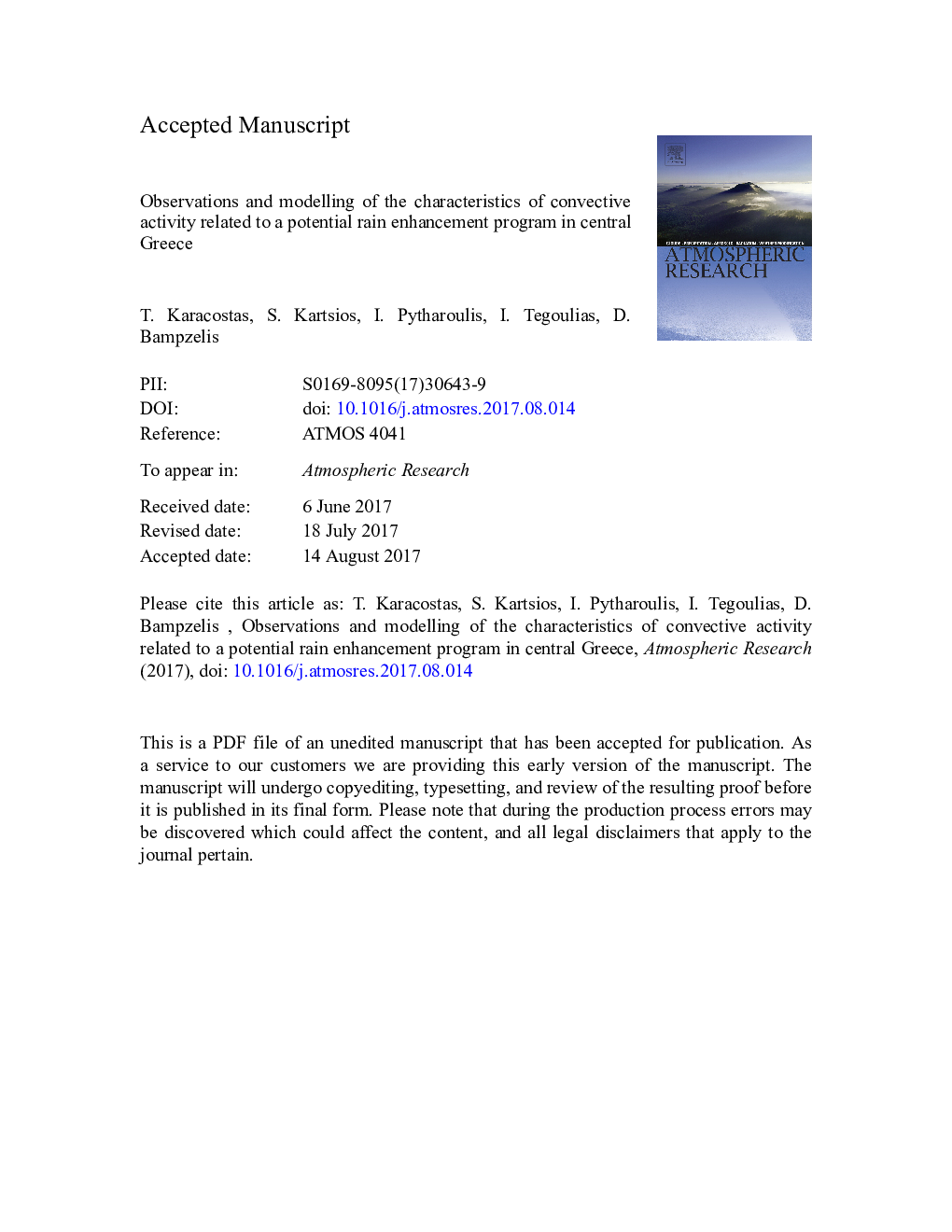| Article ID | Journal | Published Year | Pages | File Type |
|---|---|---|---|---|
| 8864643 | Atmospheric Research | 2018 | 23 Pages |
Abstract
Central Greece has a vital role in the financial life of the country, because of its significant agricultural production. The drought, which has prevailed throughout several years over the last decades and amplified by the increase of population and the water demand for irrigation, poses a serious threat. The aim on this article is, to determine the observed characteristics of convective activity in Thessaly plain, in the framework of a potential precipitation enhancement project in the area and to evaluate the performance of the non-hydrostatic Weather Research and Forecasting modelling system with the Advanced Research dynamic solver (WRF-ARW) as a valuable and useful tool for planning and performing such projects. To meet these objectives, the data information from April to September, for the years 2006-2010, are studied. Adopting the manual upper-air synoptic circulation types methodology, the examined cases are classified into distinct synoptic circulation patterns. Analogous radar information from a C-band (5-cm) weather radar system, through the TITAN algorithm, is used. The state-of-the-art WRF-ARW numerical model, with sophisticated microphysical parameterizations, is setup regarding domains and physics configuration, initialization data and justification for the adopted choices. The observed characteristics of convective activity are calculated, for each upper-air synoptic circulation type, during the examined time period. After pursuing the model verification procedures, high-resolution WRF simulations are performed, for selected case studies, under all the upper-air synoptic circulation types. The statistical evaluation of the model performance reveals that the upper-air synoptic circulation type of the cases plays an important role in the performance of the model. Nevertheless, in all the cases, the model performed adequately, giving results that match similar studies. Hence, the performed comparison between these two data sets reveals the usefulness of the WRF-ARW model in a potential rain enhancement program.
Related Topics
Physical Sciences and Engineering
Earth and Planetary Sciences
Atmospheric Science
Authors
Karacostas T., Kartsios S., Pytharoulis I., Tegoulias I., Bampzelis D.,
